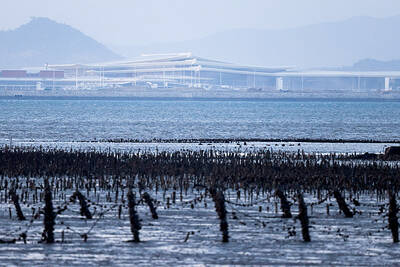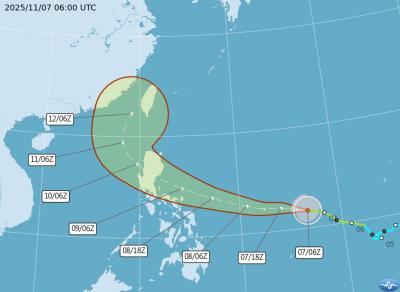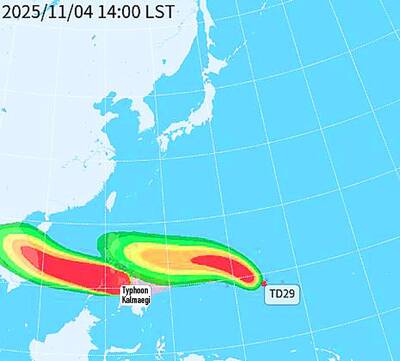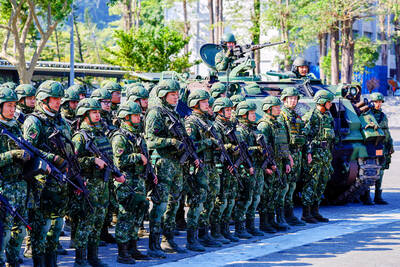Democratic Progressive Party (DPP) lawmakers yesterday accused leaders of the main opposition parties of tainting Taiwan’s international image and undermining Taiwan-US ties by airing erroneous messages to the world about events in Afghanistan.
Comparisons of the Afghan government’s military defeat to China’s planned annexation of Taiwan have mainly come from top officials in the Chinese Nationalist Party (KMT) as candidates campaign for the party’s chairperson election next month, said DPP Legislator Liu Shyh-fang (劉世芳), director of the DPP caucus.
“For the sake of scoring political points for their candidate in the party’s chairperson race, KMT officials are willing to sacrifice Taiwan’s national interests by trying to draw parallels between Taiwan and Afghanistan,” Liu told a news conference at the Legislative Yuan in Taipei.

Screen grab by Chien Hui-ju, Taipei Times
After Taliban fighters entered Kabul on Sunday, taking control of the Afghan capital, former KMT and New Party legislator Jaw Shaw-kong (趙少康) wrote on social media: “Events in Afghanistan could likely happen in Taiwan,” and “It’s foolish for the DPP government to tell Taiwanese that the US will come to save us [from China].”
The US sacrificed the Afghan government by negotiating for peace and withdrawing its troops, said Jaw, who is chairman of Broadcasting Corp of China.
“The US is not a dependable ally,” he wrote. “Taiwan must choose between peace and war, if it does not want to become another Afghanistan.”
“It is wrong to get so close to the US,” Jaw added. “People do not know the grave danger that will befall Taiwan soon.”
KMT Chairman Johnny Chiang (江啟臣) told reporters: “We are quite familiar with scenes of the US withdrawing its troops... In the 1970s, the US shifted to play the China card to contain the Soviet Union, so the US military left Taiwan. It led to much anger here, with feelings of uncertainty and apprehension regarding Taiwan’s future.”
On Tuesday, former KMT chairman Eric Chu (朱立倫), who is making a second run for the position, posted: “Of course I don’t want Taiwan to become an Afghanistan, and Taiwan must depend on itself, and not rely on any other country.”
Responding to comments that the US’ withdrawal from Afghanistan resembles the KMT’s retreat to Taiwan in 1949, Chu wrote: “If the KMT did not do so in 1949, then we would not have the Taiwan of today.”
Separately on Tuesday, KMT Culture and Communications Committee deputy director-general Wang Hong-wei (王鴻薇) wrote that history has repeated itself with the US’ frantic evacuation from Kabul just as it fled from the South Vietnamese capital of Saigon in April 1975.
“After 20 years, the US just wipes its ass and walks away,” Wang wrote. “It left chaos and the Afghan people in a very dire situation... This is not the first time that the US has abandoned an ally.”
Wang accused the US of only paying lip service to “liberty, freedom and human rights.”
Yesterday, DPP legislative caucus secretary-general Lo Chih-cheng (羅致政) said: “These KMT comments have been quoted around the international community, even giving the world the erroneous impression that these are mainstream views in Taiwan.”
Lo said that the KMT “failed to explain that the Taiwan of today is very different from the one-party authoritarian regime of the past.”

UNILATERAL MOVES: Officials have raised concerns that Beijing could try to exert economic control over Kinmen in a key development plan next year The Civil Aviation Administration (CAA) yesterday said that China has so far failed to provide any information about a new airport expected to open next year that is less than 10km from a Taiwanese airport, raising flight safety concerns. Xiamen Xiangan International Airport is only about 3km at its closest point from the islands in Kinmen County — the scene of on-off fighting during the Cold War — and construction work can be seen and heard clearly from the Taiwan side. In a written statement sent to Reuters, the CAA said that airports close to each other need detailed advanced

Tropical Storm Fung-Wong would likely strengthen into a typhoon later today as it continues moving westward across the Pacific before heading in Taiwan’s direction next week, the Central Weather Administration (CWA) said. As of 8am, Fung-Wong was about 2,190km east-southeast of Cape Oluanpi (鵝鑾鼻), Taiwan’s southernmost point, moving westward at 25kph and possibly accelerating to 31kph, CWA data showed. The tropical storm is currently over waters east of the Philippines and still far from Taiwan, CWA forecaster Tseng Chao-cheng (曾昭誠) said, adding that it could likely strengthen into a typhoon later in the day. It is forecast to reach the South China Sea

WEATHER Typhoon forming: CWA A tropical depression is expected to form into a typhoon as early as today, the Central Weather Administration (CWA) said yesterday, adding that the storm’s path remains uncertain. Before the weekend, it would move toward the Philippines, the agency said. Some time around Monday next week, it might reach a turning point, either veering north toward waters east of Taiwan or continuing westward across the Philippines, the CWA said. Meanwhile, the eye of Typhoon Kalmaegi was 1,310km south-southeast of Oluanpi (鵝鑾鼻), Taiwan’s southernmost point, as of 2am yesterday, it said. The storm is forecast to move through central

Almost a quarter of volunteer soldiers who signed up from 2021 to last year have sought early discharge, the Legislative Yuan’s Budget Center said in a report. The report said that 12,884 of 52,674 people who volunteered in the period had sought an early exit from the military, returning NT$895.96 million (US$28.86 million) to the government. In 2021, there was a 105.34 percent rise in the volunteer recruitment rate, but the number has steadily declined since then, missing recruitment targets, the Chinese-language United Daily News said, citing the report. In 2021, only 521 volunteers dropped out of the military, the report said, citing